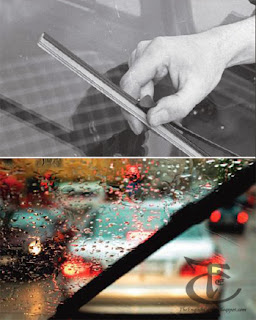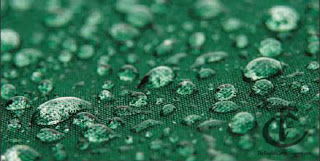Inventors
and their inventions can be very fascinating! Inventors will often tinker with
their inventions until they are perfect. In this book, we will fi nd out about
some amazing women inventors.
Women
have been inventing things since long ago. Consider, for example, the work of
Hypatia. Hypatia was born in Alexandria, Egypt, in the year 370. She invented
the astrolabe, a tool used to measure the positions of the sun and stars.
Obviously,
many women have invented things since then. Sybilla Masters, for example, was
an American colonist. She lived in the early 1700s and invented a way for corn
to be cleaned so that it could easily be used for food. She is considered to be
the first American woman inventor.
The
patent for Sybilla’s invention was given in 1715. A patent means you own the
rights to your invention. If you have a patent, no one else can make that
invention without your permission. Laws back then did not allow women to own
patents, so the patent was issued in Sybilla’s husband’s name. In later years,
women inventors would break through these barriers.
The
next time you’re riding safely in a car on a rainy or snowy night, you can
thank Mary Anderson. She invented the windshield wiper in the early 1900s.
Amazingly enough, cars weren’t even being made at that time!
Back
then, some cities had streetcars. Streetcars were vehicles that rolled through
the streets on metal rails. One snowy day, while visiting New York City, Mary
took a ride on a streetcar. Snow piled up on the windshield. The driver stuck
his head out the window so that he could see where he was going. At that
moment, Mary got her idea!
Mary
started to work. She soon came up with a “swinging arm.” It was made of rubber.
The rubber blade would move across the windshield. It would wipe away the snow
or rain. The driver of the vehicle would work the blade with a lever. In time,
Mary perfected the invention, and it worked!
Mary
received the patent for the windshield wiper in 1903. By 1916, all American
automobiles had Mary’s windshield wipers. Think about all of the cars and
trucks on the roads today. There are millions of them all over the world.
Almost all of them have Mary Anderson’s invention!
Okay,
so you don’t drive a car. You’re not really thankful for windshield wipers yet.
Well, here’s something that you may have used: liquid correction fluid. That’s
that white liquid you use to “paint over” any mistakes you make while writing
or drawing.
As
you may have already guessed, a woman invented it. Her name was Bette Nesmith
Graham. Oddly enough, she wasn’t even an inventor. She was an office worker. In
the years before computers were invented, many things were written using a
typewriter. Liquid correction fluid was born because of problems Bette had with
a typewriter.
You
see, if you spelled a word wrong with a typewriter, it was difficult to
correct. You had to use an eraser or, later, a special ribbon to try to erase
the word. This usually didn’t work very well.
Bette
liked to paint. When she made mistakes painting, she just painted over them.
She decided to try the same thing with her typing mistakes. She mixed up some
white paint and other materials in her blender at home. When she made a mistake
typing, she just painted over it with the mixture. It worked!
Soon
other workers were using Bette’s liquid. In time, she got a patent for the
liquid. She started to sell it. Today her liquid correction fluid is used all
around the world!
When
you trample the carpet with your muddy shoes, your family members probably wish
they had some liquid correction fluid to paint over the big mess. Well, if the
carpet is protected with Patsy Sherman’s product, your family members won’t
need to worry too much. That’s because Patsy invented a special coating. It
helps to keep things like carpet clean.
Patsy
was working in a laboratory in 1952. She was trying to make a special kind of
liquid rubber to be used in airplanes. While working, Patsy accidentally
spilled some of the rubber. It landed on a coworker’s shoe.
Patsy
tried to clean the rubber off the shoe. It wouldn’t come off. When she put
water on it, the water just rolled right off the shoe. The water wouldn’t soak
into the rubber or the shoe. She tried cleaners, but those rolled off, too.
Patsy
realized this stuff she had made was special. For three years, she worked on
the strange liquid rubber. Finally, by 1955, she had made the rubber into a
spray that worked just right. When you spray the product onto a carpet, for
example, it forms a “shield.” The shield stops water and dirt from getting into
the carpet and staining it. The carpet stays clean.
Today,
Patsy’s product is used on floors, carpets, clothing, and curtains. It’s even
used on photographs to protect them!
What
if you had problems with your eyes? You’d probably wish for someone to invent a
way for you to see better. Well, that’s exactly what a woman inventor named Dr.
Patricia Bath did. Patricia grew up in Harlem, a neighborhood in New York City.
While studying to be a doctor, Patricia spent time at a hospital in Harlem. She
saw that many of the people at the hospital had problems with their eyes.
Patricia wanted to help them. She began to study eyes and how they work.
Patricia
hoped to find a quicker and easier way to operate on eyes. Her quest began in
1981. She began working with lasers. Lasers are thin, powerful beams of light.
Patricia forged ahead. By 1986, she had perfected a laser machine for eye
operations. She used it to operate on the eyes of many people. She helped them
to see well again!
Today,
Patricia’s machine is still used. Patricia once said, “The ability to restore
vision is the
ultimate
reward.”
One
of the strangest things ever invented by a woman is a self-cleaning house.
That’s right, it’s a house that cleans itself! That means no more dusting or
vacuuming. The house does the work for you!
This
is no hoax. A house like this actually exists in Newberg, Oregon. A woman named
Frances Gabe invented it because she just hated housework!
Each
room of the house has a cleaner on the ceiling. The cleaner sprays soapy water
into the room, then rinses and dries it. It’s like having an automatic car wash
in each room of your house. All Frances has to do is push a button, and the
rooms get cleaned. Since the furniture is covered with plastic and all the
decorations are in glass cases, it does not matter whether they get wet!
Frances’s
house has other interesting features. Her clothes closet is a washer and dryer.
Her kitchen cabinet is a dishwasher. She puts dirty clothes or dishes away,
pushes a button, and soon the items are clean—and put away! Now that is some
awesome invention!





















0 comments:
Post a Comment